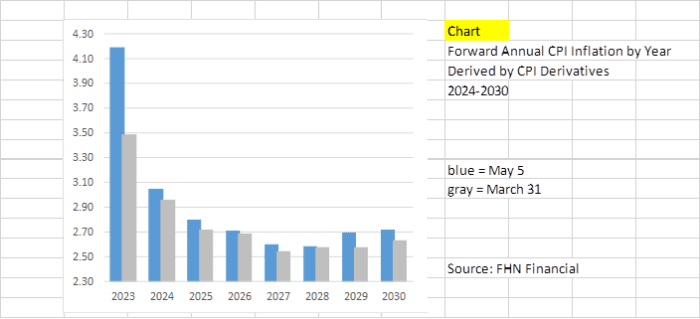This post was originally published on this site

A serviceman stands guard at a destroyed Ukrainian cargo aircraft in the Kyiv region, on Thursday. Russia’s war in Ukraine is adding to inflationary pressures around the world.
Sergei Supinsky/Agence France-Presse/Getty Images
A 1,300-point drop in Dow industrials. A dramatic selloff in bonds that sends Treasury yields soaring. Signs of panic selling on Wall Street. And a dollar soaring to some of its highest levels in two decades. All in a single day.
Thursday’s dramatic price action offers “elements” of what may still be in store on the outside risk that inflation pressures keep growing even after the Federal Reserve delivers rate hikes, said FHN Financial’s Jim Vogel. And it’s a chance that can’t be ignored, he said.
Though many in financial markets suspect U.S. inflation has already peaked, the risk is that it hasn’t — creating room for further volatility across assets. Congestion at global ports, which act as the conduit of trade, has only worsened since last year, according to RBC Capital Markets. And in a rude surprise for investors on Thursday, the Bank of England put both a double-digit inflation outlook for the U.K., plus prospects of sharply slower growth, on the map.
Read: Pound drops to nearly 2-year low, despite Bank of England lifting key rate to 1%
“There’s a risk that inflation continues to surge ahead and it would come from compounded labor-market pressures that continue to come in, along with supply shortages and logistics issues,” Vogel, a Memphis-based executive vice president, said via phone.
See: Why the stock-market plunge is partly due to bad news on the inflation front
While the range of professional estimates on the consumer-price index, excluding food and energy, is 2% to 3.5% for next year, derivatives traders see core CPI coming in closer to 4.1% in 2023. The chart below shows where derivatives traders now see the gauge going, as reflected in the blue line, versus where they expected it to be in March.

Source: FHN Financial
“While we are in the lower-inflation camp, you can’t brush aside the risk that inflation may go higher,” FHN’s Vogel said via phone. “There’s real potential for that.” While China’s COVID-19 shutdowns are one issue, Russia’s war on Ukraine has the potential to drive up the prices of everything from raw materials to goods and labor, he said.
Generally speaking, most forecasters in the U.S. are optimistic that inflation currently running at its highest level in four decades will eventually ease off. Economists surveyed by The Wall Street Journal in April saw another measure which also kicks out food and energy, known as the core PCE, falling to 2.8% in 2023 from 4.3% this year, on average. They also saw the annual headline rate on the consumer-price index falling to 2.9% by December 2023 from 7.5% this June.
Thursday’s roller-coaster ride in financial markets included a more than 1,300-point drop in Dow industrials DJIA during the final hour of trading. Treasury yields were sharply higher, with rates on 7- to 30-year maturities all trading above 3%. The ICE U.S. Dollar Index DXY rose 1.2% to its highest levels since the second half of 2002.

